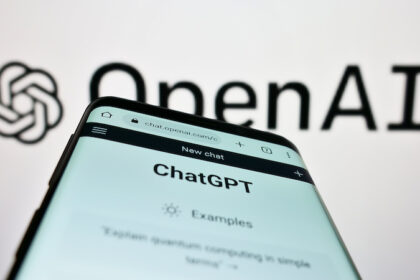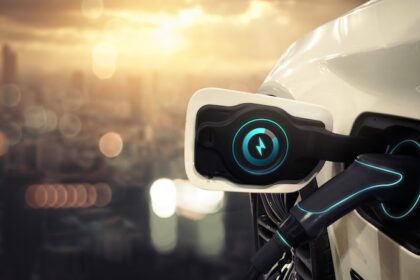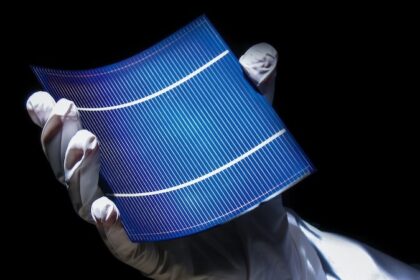Whether justified or not, drivers are afraid that their electric vehicles might run out of juice in the middle of the road. Actually, the possibility of building electric cars with unlimited range already exists: via inductive charging.
Wireless charging, also known as inductive charging or wireless energy transfer, could help electric mobility to make a breakthrough. Many car manufacturers and suppliers, but also research institutes and start-ups are currently working on this technology.
Review Physics Lesson
Most of us are familiar with the principle of inductive charging from the household, from electric toothbrushes, to induction stoves and mobile phones. An object is supplied with power without cables. In fact, this is a wireless near-field power transmission.
Flashback to physics class.
Near-field means: the transmission of energy is carried out via a magnetic flux and differs from transmission in the far-field, which is based on electromagnetic waves (see light and radio technology).
But back to inductive charging. The whole system works by means of two coils positioned at a certain distance from each other. Coil number 1 generates a magnetic field by current. This magnetic field ensures that coil number 2, or the “pickup,” can take this current. The current is thus induced.
Old technology, new approach
Now, you might be asking: wait a minute, if we know all this from physics lessons, what is so innovative about it?
The question is not unjustified. The principle of induction was finally discovered 200 years ago by the British scientist Michael Faraday.
The scientist Nikola Tesla (born in what is now Croatia) is also often referred to as a pioneer of this discipline since he invested a great deal of money in technology at the beginning of the 20th century. But he never made the breakthrough and was quickly forgotten. Until a certain Elon Musk started using his name and visions for himself.
But while Nikola Tesla tried to induce electricity from the earth’s atmosphere with huge towers of ions and electrons, today’s approaches to electro-mobility are more down-to-earth – in the truest sense of the word. Scientists, car manufacturers and suppliers are working mainly on two methods of induction: inductive charging via stationary pads and inductive charging while driving across the road.
The charging plate with the paw sensor
In order for the wireless charging of electric cars to work, the vehicles must have a coil in the underbody, typically in the front axle area. Why right there? To ensure that the distance to the charging station (on the road or on the garage floor) is as small as possible. The closer the two coils are to each other, the more efficiently the energy transfer works. For an electric car like the BMW i3, this means that the ideal distance between the two coils is 100 to 140 millimeters.
BMW in particular relies on this technology and is currently using it in all its i-series vehicles, albeit still in the prototype stage. BMW is working with Qualcomm, a chip manufacturer from the USA. In Formula E, the technology is already being used for pace cars or safety cars.
The pallet Qualcomm has developed for Formula E and will soon be made available to the mass market is called “Halo,” which works in any wind and weather and also incorporates a Foreign Object Detection feature. This is a safety sensor that can detect foreign objects – from the paper clip to the dog’s paw – and then automatically interrupts the charging process.
The first models with induction charging technology from German car makers, including BMW and Audi, are to be launched on the market in 2018. Finding public charging pads and the charging itself could be done via the smartphone or a special chip card.
Snack charges of everyday life
Sweden is already one step ahead. Volvo has already successfully completed the development of such a charging pad. The garage pad is to be included with the Volvo C30 Electric to make charging quicker and easier. Some models will be able to charge the battery fully by induction in up to one hour. With the E-Smart, charging could even take as little as 45 minutes.
The idea of the loading pads is not only intended for the domestic garage, but also for charging while parked. For example, the electric car could be charged while you are shopping or sitting in the waiting room at the doctor’s office. It is precisely this bit by bit charging, the “snack charging,” that is supposed to be better for the battery. Audi employee Björn Elias says: “The short cycles are the best thing that can happen to the battery: the lower the charging thrust, the longer the life expectancy” – this may sound good from the point of view of a car manufacturer who is betting on induction charging for electric cars. In fact, opinions on whether this is true or not differ somewhat.
However, one thing is certain: unlike the superchargers, short charging cycles do not damage the service life of the batteries.
Early tests show that charging while driving works
While car manufacturers are concentrating on the charge pads, various research institutes, as well as governments and start-ups, are working to enable inductive charging on the road while driving.
For example, the Fraunhofer Institute for Manufacturing Technology and Applied Materials Research (IFAM) in Bremen has built an electric sports car in which the battery is charged while driving. Artega 1 is the model, with 424 hp. The Artega 1 was driven for the first time in 2015, at 30 kilometers per hour on a 25-meter test track. Coils for charging were installed in the roadway. In their test, the researchers successfully demonstrated how the electric sports car could be harged while driving.
But of course, this is only the beginning. The aim is to be able to use the technology at full speed. This dynamic induction requires that the installed coils be switched on and off in the correct rhythm. For the method to be used nationwide, the entire road infrastructure would have to be converted.
Not cheap, but not too expensive, says Felix Horch, head of the Electric Drives department at IFAM: “The construction of a motorway kilometer would be more expensive overall thanks to induction technology, but the costs would certainly not multiply. It’s a fundamental infrastructure decision: at some point in time, it was decided to electrify the railway network.”
England’s example shows that this could well be a sustainable project. Highways England, the state motorway operator, is considering testing the method on an electric highway for 18 months.
In France, Renault and Qualcomm have also demonstrated that charging can work while driving.
Earn money with “solar streets”
But why not rely on solar energy for dynamic inductive charging? The Potsdam-based start-up Solmove is working on this. With the concept of a solar street, the company wants to use the streets in two ways.
This means that existing traffic routes can be upgraded with stable photovoltaic modules and thus not only electric cars, but also e-bikes and even trains can be charged. In addition, the electricity generated in this way could also be fed into the municipal energy grid. Cities could earn money from it and thus finance the rehabilitation of their roads. This, at least, is Solmove’s idea.
However, the solar roads must be horizontal surfaces. Solmove says that in Germany, 1,400 km² are still suitable for this purpose. This could supply 20,000,000,000 cars with electricity.
Large buses, small batteries
Tel Aviv already has the world’s first electric road. The Israeli start-up ElectRoad is testing these mainly for public transport. The theory: induction charging makes it possible to operate the large buses with smaller and lighter batteries. That could save a lot of money.
In Germany, too, there are some early projects in public transport with wireless charging, but not for charging during the journey. Rather, they rely on charging pads. For example, the electric buses in Braunschweig, “Emil” (short for “electro-mobility by means of inductive charge”) have been using induction technology to charge their fleets for several years now.
Inductive charging for electric buses has also began being tested in Berlin in 2015.
The clear advantage: endless range
But why all the trouble? What does inductive charging offer that charging with cables doesn’t?
First of all, wireless charging is more convenient for users. You don’t have to handle cables in a cumbersome way. In addition, in some cases, inductive charging is up to 85 times faster than charging via the home socket.
If we look at inductive charging while driving, the advantage is obvious. If the car can recharge while driving, the electric vehicle theoretically has an unlimited range.
In fact, the development of this technology is a bit more challenging than the charge pads. Finally, it must be ensured that the coils switch on and off at the correct distance. And all this at full speed, at different speeds. In addition, it must of course also be ensured that the magnetic field on the roadway is harmless to humans and animals.
An alternative to the ground coils could be inductive charging via overhead lines. Siemens wants to implement this on motorways for trucks – a world first. The Group has been awarded the contract for the construction of such an e-motorway for test purposes by the relevant authorities in California. While this can still be reasonably imagined for trucks, it is unlikely that car manufacturers will suddenly build models with pantographs on the roof.
It is therefore interesting to see which forms of inductive charging will be used in the future. But Thomas Nindl of Qualcomm’s Munich office is probably right about one thing:”Our children will lose the word ‘refuel’ from their vocabulary.”










